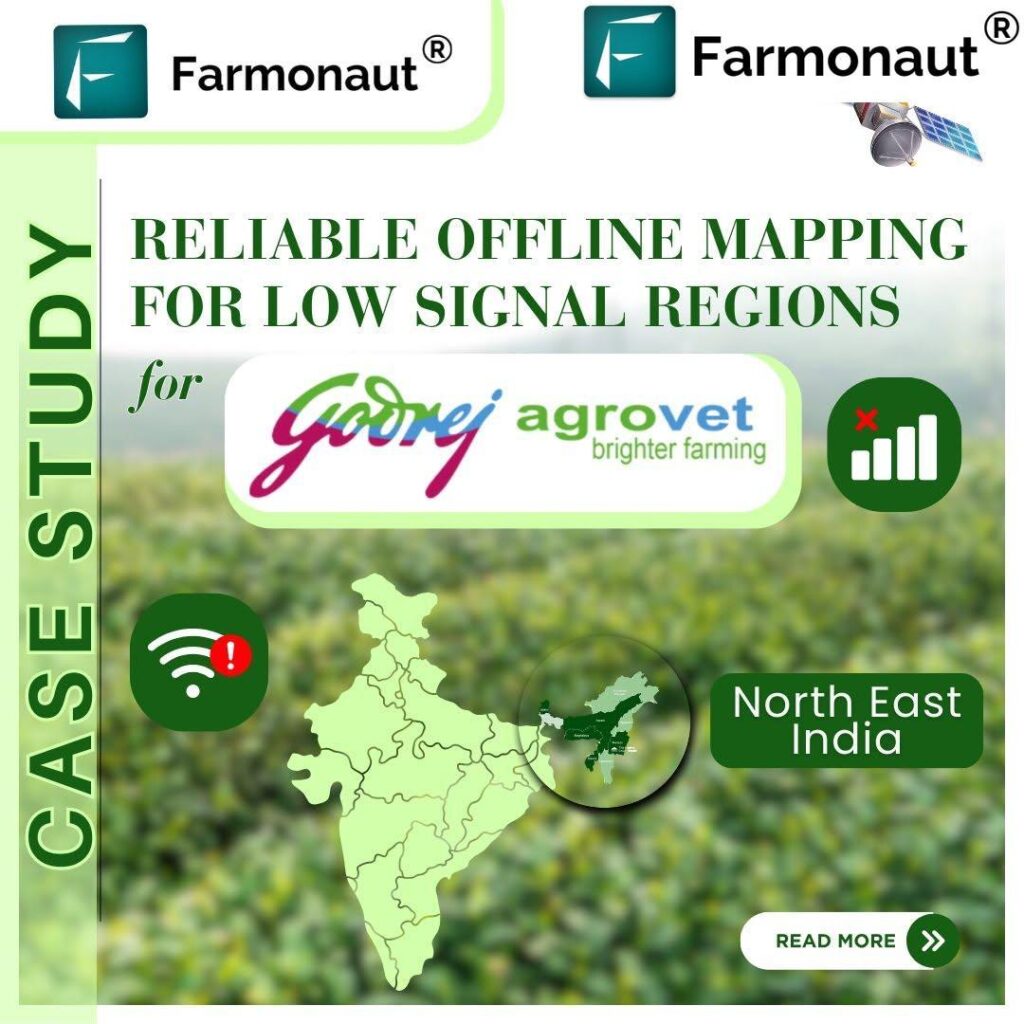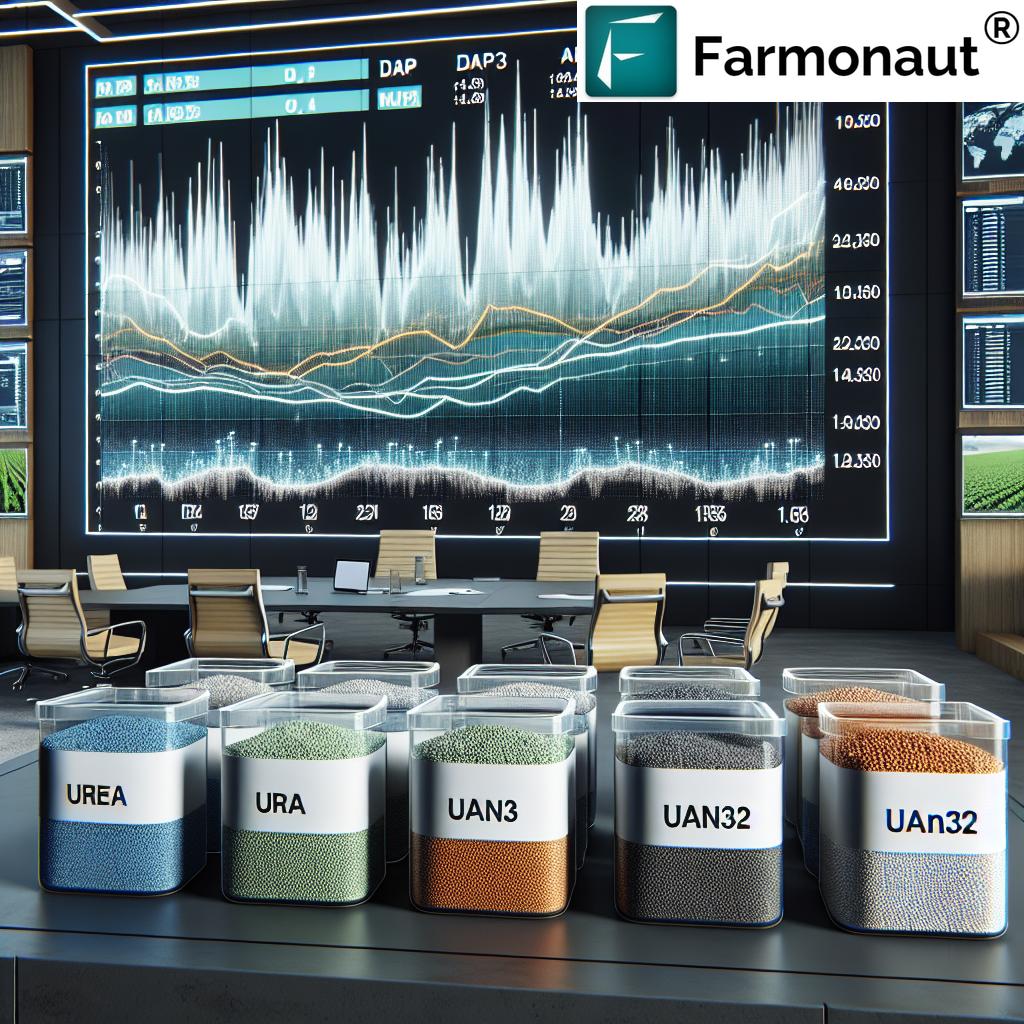Exports Large Amounts of Potash: 2024 Market Trends
Table of Contents
- Introduction: Potash and Its Global Significance
- Potash Market Trends 2024: An Overview
- Key Exporters & Production Insights
- Canada: The Global Leader in Potash Exports
- Russia: A Major Contributor Despite Sanctions
- Belarus: A Key Exporter Powering Asia’s Demand
- Germany: Europe’s Leading Potash Supplier
- Global Potash Market Dynamics: Supply, Prices & Trade
- Potash Demand in Agriculture & Crop Yields Enhancement
- Potash Prices 2024: Implications & Forecasts
- Technological Impact: Farmonaut & Precision Agriculture
- Top Potash Exporting Countries in 2024: Comparison Table
- FAQ: Global Potash Market 2024
- Conclusion: The Future of Global Potash Export
Introduction: Potash and Its Global Significance
Potash – a vital mineral and key source of potassium – is at the heart of the global food production system. Used primarily in the form of potassium fertilizers, potash is essential for plant growth, deeply influencing crop yields, quality, and overall worldwide food security. In 2024, as we witness potash production and exports reaching record highs, market observers are closely tracking the global potash market dynamics, fluctuating price trends, and the strategic maneuvers of leading exporters like Canada, Russia, Belarus, and Germany.
This comprehensive analysis dives into the potash market trends of 2024, regional shifts in production and export strategies, the supply chain turbulence caused by geopolitical events, and advanced technological solutions for optimized agricultural management.
Potash Market Trends 2024: An Overview
The global potash market is experiencing rapid changes in 2024, characterized by heightened agricultural demand, market volatility, new export strategies, and resilient supply chains amid geopolitical disruptions. As a crucial mineral and the dominant source of potassium in fertilizers, potash plays an indispensable role in enhancing crop yields, making its movements highly significant for agricultural economies worldwide.
- Key drivers: Population growth, rising food security concerns, and shifting dietary preferences have all increased the demand for potash fertilizers in 2024.
- Production and exports: Led by Canada, with major roles played by Russia, Belarus, and Germany, potash exports are set to surpass 70 million tonnes this year.
- Price dynamics: Geopolitical tensions and supply chain disruptions—notably due to the war in Ukraine—have led to a potash price surge of over 15% in early 2024 before partial market stabilization took place.
Key Exporters & Production Insights: Global Potash Market
The 2024 potash production landscape is dominated by a tightly-knit group of major potash exporting countries that collectively shape the global market. The world’s largest potash producers—Canada, Russia, Belarus, and Germany—not only command the majority of potash supply but also influence potash prices, trade routes, and international market stability.
- Canada: The world’s leading potash exporter, concentrated in Saskatchewan.
- Russia: Resilient contributor even while facing international sanctions.
- Belarus: Strategically significant supplier with a large portion of global trade.
- Germany: Europe’s key provider of potash through established industrial operations.
These countries set the benchmark for potash market dynamics through their production volumes, export patterns, and trade policies.
Canada: The Global Leader in Potash Exports
Canada stands as the undisputed leader in potash production and exports in 2024, accounting for nearly 15 million metric tons of potash, an 11% increase from 2023. The province of Saskatchewan is the heart of Canada’s potash industry, housing all national potash mining and processing. Potash mined here is a source of potassium fertilizers crucial for the country’s—and the world’s—food security.
-
Production statistics:
Canada produced approximately 15 million metric tons of potash in 2024, retaining its status as the top global potash exporter. -
Export structure:
Canpotex, the marketing firm representing Saskatchewan’s producers (excluding sales within Canada and the United States), is the world’s largest exporter, managing the sale and export of over 13 million tonnes annually. This accounts for about a third of global capacity. -
Export destinations:
Canadian potash is primarily exported to the United States, Brazil, China, India, and Southeast Asia, making it a critical link in the global potash supply chain. -
Strategic role:
With vast reserves and modern facilities, Saskatchewan continues to anchor the world’s potash supply, supporting agricultural productivity worldwide.
Canada’s consistent year-on-year production increase and strategic export management keep it at the center of potash market trends in 2024.
Russia: A Major Potash Exporter Despite Sanctions
Russia maintains its status as a major player in the global potash market amid international complexities. In 2024, Russian output stood at 9.1 million metric tons—approximately 17.14% of global production. The nation leverages extensive mining and processing facilities, primarily operated by Uralkali.
-
Production and capacity:
Despite international sanctions and logistical hurdles, Russia managed to maintain—and even slightly increase—potash production in 2024. -
Export strategies:
Russian exporters have focused on Asia and South America, utilizing alternative trade routes and offering competitive pricing to retain global market share. -
Export destinations:
Key recipients include China, India, Brazil, and Vietnam. -
Market resilience:
Russia’s agile management of supply chains—despite facing significant pressure—has lent stability to global potash supply levels in 2024, ensuring continued support for agricultural demand worldwide.
Russian export growth also contributed to a gradual normalization of potash prices after the 2022–2023 surge—a critical development for both producers and the world’s farmers.
Belarus: A Key Exporter Powering Asia’s Demand
Belarus continues to be a significant exporter on the global potash market, supplying both Asia and South America. In 2024, the country reported production of 7 million metric tons—a marked increase over previous years. The state enterprise Belaruskali is pivotal, controlling approximately 20% of total world potash supply.
-
Production growth:
Belarus increased output in 2024, with a focus on upgrading mines and processing facilities. -
Export markets:
A substantial portion of Belarusian potash is exported to China and other Asian markets, solidifying its role as a dependable supplier for rapidly growing economies. -
Strategic positioning:
The emphasis on trade with Asia and South America has helped Belarus maintain high export volumes, even amidst international sanctions and shifting trade patterns.
Belaruskali’s adaptability to international conditions maintains a steady supply of potash fertilizers, underlining Belarus’s importance among major potash exporting countries.
Germany: Europe’s Leading Potash Supplier
Germany remains the largest potash producer in Europe, reporting 3 million metric tons of output in 2024. The company K+S operates multiple mines and processing sites, ensuring reliable domestic and international supply.
-
Production and export capacity:
K+S drives much of Germany’s potash output, reporting a 5% revenue increase in high-demand periods thanks to higher sales volumes in its agricultural segment. -
Major export destinations:
Germany exports potash primarily within the European Union (Poland, France, Italy) and to international destinations such as Brazil and China. -
Stability factor:
Germany’s sophisticated infrastructure and financial resilience have enabled it to weather global market fluctuations and continue as a stable supplier in 2024.
German potash’s role in enhancing agricultural output extends throughout Europe and beyond, bolstered by progressive mining and environmental practices.
Global Potash Market Dynamics: Supply, Prices & Trade
Potash market dynamics in 2024 continue to be shaped by both predictable and unexpected events. After the war in Ukraine and related supply chain disruptions in 2022 and 2023, the market entered a period of recovery and stabilization. The resumption of high-volume exports from Russia and Belarus, the increase in Canadian production, and the steady growth in demand for potash fertilizers all combine to set the tone for pricing, regional supply, and export flows.
- Supply chain adjustments: Disruptions led to rerouted supplies, especially towards Asia and South America, as producers adapted to sanctions and logistical barriers.
- Price volatility: Potash prices soared more than 15% early in 2024 before moderating as supply increased and the market adjusted to new international realities.
- Beneficiaries: Farmers in key agricultural markets have benefitted from lower prices and increased fertilizer availability, supporting higher crop yields and global food security.
Overall, the global potash supply chain has demonstrated resilience, responding to disruptions with strategic production shifts and flexible trade practices.
Top Potash Exporting Countries in 2024: Production, Exports, and Price Trends
| Country | Estimated 2024 Potash Production (Million Tons) | Estimated 2024 Potash Exports (Million Tons) | Year-on-Year Export Change (%) | Average Export Price (USD/Ton) | Major Export Destinations |
|---|---|---|---|---|---|
| Canada | 15 | 13 | +11% | $330 | USA, Brazil, China, India, SE Asia |
| Russia | 9.1 | 8.5 | +6% | $294 | China, Brazil, India, Vietnam |
| Belarus | 7 | 6.7 | +8% | $297 | China, Brazil, SE Asia |
| Germany | 3 | 2.7 | +5% | $315 | EU, Brazil, China |
This table highlights how 2024 potash production and exports are increasingly concentrated among a few key players, with Canada topping both categories, while Russia and Belarus demonstrate remarkable adaptability in the face of sanctions, and Germany underpins European supply stability. Market-responsive pricing remains essential for exporters to retain competitiveness in global trade.
Potash Demand in Agriculture & Crop Yields Enhancement
Potash is a crucial component in commercial and sustainable farming due to its direct link to plant health, soil fertility, and crop yields. Potash demand in agriculture is forecasted to rise further, as growing populations and changing climates demand more resilient agricultural practices.
- Benefit of Potassium Fertilizer: Potassium boosts drought resistance, enhances photosynthesis, optimizes nutrient use, and strengthens crops against disease.
- Food security: Higher crop yields derived from optimal potassium nutrition are indispensable to meeting the world’s food needs.
- Market linkage: The performance of major potash exporting countries directly impacts fertilizer pricing and availability in critical regions including Asia and South America.
The potassium fertilizer benefits are clear: improved productivity, fewer losses, and enhanced farm profitability.
Potash Prices 2024: Implications & Forecasts
Potash prices in 2024 reflect a unique blend of rising production, turbulent geopolitics, and adaptive international trade strategies. Early 2024 saw a significant price surge, with average export prices climbing above $300 per ton. As the year progressed and supply chains adapted, prices stabilized, benefitting global farmers and food production.
- Market normalization: As Russia and Belarus restored exports and Canada raised output, prices eased toward historical averages. This contributed to more affordable fertilizers worldwide.
- Regional differences: Price fluctuations remain, particularly in markets with higher logistical costs or persistent trade barriers.
For the near term, potash market analysts anticipate stable or even slightly declining prices, assuming no fresh supply shocks—a welcome trend for global agricultural efficiency.
Technological Impact: Farmonaut & Precision Agriculture
As global potash market dynamics evolve and pressure mounts on resources, advanced technology is playing a transformative role in agricultural success. At Farmonaut, we are dedicated to making precision agriculture both affordable and accessible, supporting farmers worldwide in optimizing crop yields and promoting sustainability.
-
Real-time Crop Health Monitoring:
We provide satellite-based multispectral imagery for crop health assessment (NDVI, soil moisture, etc.), so farmers can make informed decisions about potash fertilizer application and resource allocation. This empowers users to maximize yields and minimize waste. -
AI-Based Farm Advisory (Jeevn AI):
Through our AI-powered advisory system, we equip farmers with personalized growing advice based on satellite data, weather patterns, and field history—ensuring optimal potash fertilizer timing and dosage. -
Blockchain Traceability:
Our blockchain-based traceability system ensures full transparency in farm product journeys, from harvest to retailer, increasing supply chain trust and integrity—crucial in the modern global agricultural trade environment. -
Resource and Fleet Management:
We streamline fleet rollout and logistics for agribusinesses, enabling precise delivery of fertilizers and harvest collections, which is especially important for large-scale potash-driven agricultural operations. -
Sustainability & Carbon Footprinting:
We help businesses and institutions continuously track their environmental impact through carbon footprinting tools, supporting long-term sustainable agriculture. -
Crop Finance and Insurance:
We also facilitate satellite-based crop loan and insurance verification, helping more farmers gain access to financial services. -
API Integration:
The Farmonaut Satellite and Weather API provides seamless access to satellite data for integration into agri-business platforms and research. Learn more about our API here or view our detailed developer documentation here.
Our mission is to democratize the benefits of high-precision agriculture. The Farmonaut platform is available via Android, iOS, browser, and API, making advanced farm management universally accessible.
For corporates managing traceable supply chains or agribusinesses seeking large-scale efficiency, our large-scale farm management application offers robust multi-farm monitoring, logistics, and yield estimation features.
Farmonaut Plans & Subscription Options
We offer flexible subscription plans for farmers, cooperatives, agribusinesses, and institutions, ensuring suitability regardless of farm size or monitoring requirement.
FAQ: Global Potash Market 2024
What is Potash and Why is It Important?
Potash refers to various mined and manufactured salts containing potassium in water-soluble form, primarily used as a fertilizer. It is an essential plant nutrient which helps improve drought resistance, disease resistance, photosynthesis, and yields, making it crucial for global food supply.
Which Countries Are the Largest Potash Producers in 2024?
Canada is the world’s largest potash producer, followed by Russia, Belarus, and Germany. These countries dominate global supply and exports, shaping price and trade trends.
What Caused Potash Prices to Surge in 2024?
Price surges were primarily due to supply chain disruptions linked to geopolitical events, especially the war in Ukraine, and rapidly increasing agricultural demand. As production and exports normalized, prices stabilized.
How Is Potash Exported Worldwide?
Potash is exported in bulk via rail and seaports, with major marketing firms such as Canpotex facilitating international trade from Saskatchewan (Canada), and large producers in Russia, Belarus, and Germany managing their own global supply routes.
What Role Does Potash Play in Sustainable Agriculture?
Potash use in fertilizers bolsters soil fertility, improves crop stress resistance, and supports sustainable farming practices. Modern agri-tech tools, including Farmonaut’s crop health platform, enable the precise application of potash, reducing waste and boosting eco-friendliness.
Conclusion: The Future of Global Potash Export
Potash remains the backbone of global agriculture, feeding billions and driving yields in every major crop-producing region. The 2024 market trends highlight both the volatility and the adaptability of this crucial mineral. With Canada, Russia, Belarus, and Germany at the forefront, the world’s potash supply continues to rise in step with growing agricultural demand.
Shifts in export patterns, adjustments to international sanctions, and the ongoing need to enhance crop yields solidify potash’s place in global food security strategies. Advances in data-driven precision agriculture—as delivered through Farmonaut’s cutting-edge satellite and advisory solutions—make the effective and sustainable use of potash possible on every continent.
As the world’s population grows and the climate presents new challenges, potash will remain a vital source for plant nutrition and a crucial component in the quest for higher, more sustainable crop production.
To experience the advantages of data-driven, precision farming—including optimized fertilizer application for higher yields—explore the Farmonaut app today.
















